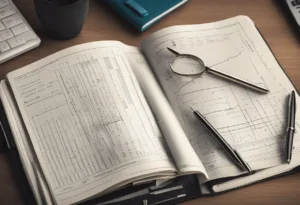Journaling is a powerful tool that can help individuals gain insight into their thoughts, emotions, and experiences. It can be a therapeutic way to express oneself, relieve stress, and promote self-discovery. However, sometimes it can be challenging to come up with journal ideas that inspire creativity and self-reflection. Fortunately, there are many resources available that offer prompts and ideas to help individuals get started with journaling. These ideas can range from simple prompts like “what made you smile today?” to more complex prompts like “what are your core values and how do they influence your decisions?”
Whether you are new to journaling or a seasoned pro, there is a variety of journal ideas to explore. By taking the time to reflect and write, individuals can improve their mental health, increase their creativity, and gain a better understanding of themselves.
Benefits of Journaling
Journaling is a simple yet effective way to improve one’s mental health, well-being, and personal growth. It has been proven to offer a range of benefits, including reducing stress, promoting happiness, and enhancing creativity. In this section, we will explore some of the key benefits of journaling.
Mental Health and Well-being
Journaling has been shown to have a positive impact on mental health and well-being. By putting thoughts and emotions down on paper, individuals are able to gain a better understanding of their feelings and work through any issues they may be facing. This can lead to a reduction in stress and anxiety, as well as an increase in overall happiness.
Journaling can be a useful tool for individuals who are struggling with mental health conditions such as depression or anxiety. By writing down their thoughts and feelings, individuals may be able to gain a new perspective on their situation and find new ways to cope.
Personal Growth and Goals
Journaling can also be a powerful tool for personal growth and goal-setting. By regularly reflecting on their experiences and setting goals for the future, individuals can develop a greater sense of purpose and direction in their lives.
Journaling can also help individuals to identify patterns in their behavior and thought processes, allowing them to make positive changes and break negative habits. This can lead to greater self-awareness and a stronger sense of personal identity.
Journaling is a simple yet effective way to improve one’s mental health, well-being, and personal growth. By taking the time to reflect on their experiences and emotions, individuals can gain a better understanding of themselves and the world around them. Whether you are looking to reduce stress, promote happiness, or achieve your goals, journaling can be a powerful tool to help you get there.
Different Types of Journals

Journaling is an excellent way to improve mental health, reduce stress, and increase creativity. There are several different types of journals to choose from, each with its unique benefits. Here are some of the most popular types of journals:
Gratitude Journals
A gratitude journal is a journal where one can write down things they are thankful for. This type of journal can help people focus on the positive aspects of their lives, which can improve their overall well-being. Gratitude journals can be as simple as writing down three things you are thankful for every day, or more detailed, such as writing a paragraph about each thing you are grateful for.
Travel Journals
Travel journals are a great way to document trips and keep memories alive. They can include pictures, ticket stubs, and other memorabilia from the trip. Travel journals can also include descriptions of the places visited, the food tasted, and the people met. This type of journal can be a great way to relive the trip and share it with others.
Art Journals
Art journals are a combination of words and art. They can include sketches, paintings, collages, and other forms of art. This type of journal can be a great way to express oneself creatively and can be used as a form of therapy. Art journals can be as simple or as complex as one desires, and there are no rules to follow.
There are several different types of journals to choose from, each with its unique benefits. Whether one is looking to improve mental health, document trips, or express oneself creatively, there is a journal out there for everyone.
Journaling Techniques

Journaling is a powerful tool for self-reflection, personal growth, and creativity. There are many different techniques and approaches to journaling, each with its own benefits and drawbacks. In this section, we will explore two popular journaling techniques: Bullet Journaling for Beginners and Creative Prompts and Exercises.
Bullet Journaling for Beginners
Bullet journaling is a popular technique for organizing and tracking tasks, goals, and ideas. It involves creating a simple system of symbols and shorthand to quickly capture and categorize information. The beauty of bullet journaling is that it can be customized to suit any individual’s needs and preferences.
To get started with bullet journaling, all you need is a notebook and a pen. Some people prefer to use a specific type of notebook, such as a dotted or grid notebook, but any notebook will do. The key is to keep it simple and easy to use.
Here are some tips for getting started with bullet journaling:
- Start with a key: Create a key that explains the symbols and shorthand you will use in your bullet journal. This will make it easier to quickly capture and categorize information.
- Create an index: Reserve the first few pages of your bullet journal for an index. This will make it easy to find specific information later on.
- Use collections: Create collections for different types of information, such as tasks, goals, ideas, and notes. Use bullets to quickly categorize each item.
- Review regularly: Set aside time each week to review your bullet journal and update your collections. This will help you stay on track and make progress toward your goals.
Creative Prompts and Exercises
Journaling can also be a powerful tool for creativity and self-expression. By using creative prompts and exercises, you can tap into your imagination and explore new ideas and perspectives.
Here are some creative prompts and exercises to try:
- Write a letter to your future self: Imagine yourself 10 years in the future and write a letter to yourself. What do you hope to have accomplished? What advice would you give yourself?
- Draw a mind map: Start with a central idea or theme and create a visual map of related ideas and concepts. This can help you explore new connections and perspectives.
- Write a stream of consciousness: Set a timer for 10-15 minutes and write whatever comes to mind, without stopping or editing. This can help you tap into your subconscious and generate new ideas.
- Use a random word generator: Choose a random word or phrase and use it as a prompt for your journal entry. This can help you break out of your usual thought patterns and explore new ideas.
Setting Up Your Journal

Journaling is a great way to reflect on your thoughts and feelings, but it’s important to have the right setup to make the most of your journaling experience. This section will cover two important aspects of setting up your journal: choosing the right notebook and structuring your journal.
Choosing the Right Notebook
The first step in setting up your journal is choosing the right notebook. When selecting a notebook, consider the size, paper quality, and binding. A notebook that is too small may limit your writing space, while a notebook that is too large may be difficult to carry around.
The paper quality is also important as it affects the writing experience. A paper that is too thin may allow ink to bleed through, while a paper that is too thick may be difficult to write on. Finally, the binding is important as it affects the durability of the notebook. A spiral-bound notebook may be easier to write in, but the pages may become loose over time.
Structuring Your Journal
Once you have chosen the right notebook, it’s time to structure your journal. This involves deciding on how to organize your journal and what to include in it. One popular way to structure a journal is by using a bullet journal system.
This involves creating an index, setting up a key, and using symbols to represent different types of entries. Another way to structure a journal is by using a daily, weekly, or monthly format. This involves dividing the journal into sections and dedicating each section to a specific time period.
When structuring your journal, it’s important to consider the purpose of your journal. If you are using your journal for self-reflection, you may want to include prompts or questions to guide your writing. If you are using your journal for creative writing, you may want to include blank pages for free writing.
Choosing the right notebook and structuring your journal are important steps in setting up your journal. By considering the size, paper quality, and binding of the notebook, you can ensure a comfortable writing experience. By structuring your journal with purpose and intention, you can make the most of your journaling experience.
150Journal Ideas
- Reflect on your most significant achievement this year.
- Write about a place you’d love to travel to and why.
- List your top five short-term and long-term goals.
- Describe your perfect day from morning to night.
- Record the best advice you’ve ever received and how it helped you.
- Illustrate your dream job and the steps to get there.
- Create a bucket list of experiences you want to have.
- Document a day in your life with as much detail as possible.
- Express gratitude for three things every day.
- Identify your biggest fears and how you can overcome them.
- Track your mood daily and look for patterns.
- Share a memory that makes you smile every time.
- Plan your ideal self-care routine and how to implement it.
- Detail a conversation that changed your perspective.
- Explore your personal strengths and how to use them more.
- Map out a fictional story with you as the protagonist.
- Collect inspiring quotes and what they mean to you.
- Examine a habit you want to break and strategies to do so.
- Sketch a vision board in your journal with your aspirations.
- Note the best compliment you’ve received and why it mattered.
- Analyze a book or movie that deeply affected you.
- Chronicle a significant turning point in your life.
- Outline a plan to improve your financial health.
- Recall a challenge you faced and how you overcame it.
- Invent a new holiday and how you would celebrate it.
- Debate a topic you feel passionate about.
- Predict where you’ll be and what you’ll be doing in 10 years.
- Dedicate a page to your favorite hobby and why you enjoy it.
- Discuss the most important lesson you’ve learned this year.
- Summarize what happiness means to you.
- Evaluate your personal growth over the past five years.
- Compose a letter to your future self.
- Illustrate your life’s timeline with key events.
- Compare your current self to your younger self.
- Investigate a topic you know little about and want to explore.
- Report on your progress towards current goals.
- Imagine your life as a movie and describe the key scenes.
- Enumerate the things that make you feel alive.
- Describe your favorite season and activities associated with it.
- Conjure up your dream home and what it includes.
- Detail an act of kindness you witnessed or performed.
- Write down your favorite recipe and the memories associated with it.
- Chronicle the last time you tried something new.
- Share the story of your name and if it suits you.
- Recall a moment when you felt completely at peace.
- Explain the impact technology has on your daily life.
- Plan a road trip to places you’ve never been.
- Write a review of your favorite restaurant or café.
- Document the things you would tell your teenage self.
- Express your feelings about the current state of the world.
- List the qualities you look for in a friend.
- Share the biggest risk you’ve taken and its outcome.
- Describe a tradition you cherish and its origins.
- Record the last dream you remember in detail.
- Explore what forgiveness means to you.
- Note the things you’d do if you weren’t afraid.
- Detail the qualities you admire in others.
- Chronicle a day you would like to relive.
- Invent a new product or service that would improve lives.
- Share a poem or song that resonates with you.
- Discuss the role of art and culture in your life.
- Describe a random act of kindness that you will commit.
- Evaluate a personal relationship and its significance to you.
- Write about your favorite childhood memory.
- Plan how you would spend a million dollars.
- Describe the last time you felt truly accomplished.
- List the things you would include in a time capsule.
- Share your thoughts on a current event.
- Write about something you’re looking forward to.
- Explore the concept of home and what it means to you.
- Record a moment when you felt proud of yourself.
- Write about someone who has had a significant impact on your life.
- Plan an adventure you want to go on.
- Discuss a societal issue that you care about.
- Share a personal victory, no matter how small.
- Write about a time you helped someone.
- List your favorite qualities about yourself.
- Describe what you would do on a “mental health day.”
- Share the last compliment you gave someone.
- Write about a time you stood up for yourself or someone else.
- Explore what balance means to you and how you achieve it.
- Record the best thing that happened to you this week.
- Write about a hobby you’d like to pick up.
- Discuss your favorite way to spend a rainy day.
- Share a goal you recently accomplished.
- Write about a time you felt out of your comfort zone.
- Explore the concept of time and how you perceive it.
- Record the last time you laughed uncontrollably.
- Write about a person you miss and why.
- Discuss the last movie or show that made an impression on you.
- Share a tradition you want to start.
- Write about a time you were grateful for a difficult experience.
- Explore the idea of success and what it means to you.
- Record a life lesson you learned the hard way.
- Write about a piece of advice you would give to others.
- Discuss a recent decision you made and its outcomes.
- Share a fear you have and how you cope with it.
- Write about a time you were surprised by your own strength.
- Explore the role of education in your life.
- Record something new you learned about yourself recently.
- Write about an artist or creator you admire.
- Discuss the last time you made someone smile.
- Share a quote that you live by.
- Write about a time you forgave someone.
- Explore the concept of leadership and what it means to you.
- Record your thoughts on climate change and personal responsibility.
- Write about a time you were wrong and what you learned.
- Discuss the importance of self-expression in your life.
- Share a moment when you felt connected to nature.
- Write about a time you had to be brave.
- Explore the meaning of family and its importance to you.
- Record the last time you felt inspired.
- Write about a personal hero of yours.
- Discuss the last time you felt a sense of wonder.
- Share a moment when you felt truly listened to.
- Write about a time you made a positive change in your life.
- Explore the idea of patience and its role in your life.
- Record a moment of serendipity or a happy coincidence.
- Write about a time you were proud of a friend.
- Discuss your thoughts on aging and maturity.
- Share a moment when you experienced personal growth.
Journal Prompts for Self-Reflection

Journaling is an excellent way to reflect on oneself and gain insights into one’s thoughts, feelings, and behaviors. By writing down your thoughts and feelings, you can gain clarity and understanding of yourself. Here are some journal prompts for self-reflection:
Reflecting on Life and Relationships
- What are the most important things in your life, and why are they important to you?
- What are your biggest fears, and how do they affect your life?
- Who are the people in your life that you are most grateful for, and why?
- What are some of the biggest challenges you have faced in your life, and how have you overcome them?
- What are some of the most significant changes you have experienced in your life, and how have they impacted you?
Career and Personal Achievements
- What are your biggest accomplishments in your career, and how did you achieve them?
- What are some of the most significant challenges you have faced in your career, and how have you overcome them?
- What are some of the things you would like to achieve in your career in the future, and how do you plan to achieve them?
- What are some of the biggest personal achievements you have accomplished, and how did you accomplish them?
- What are some of the things you would like to achieve personally in the future, and how do you plan to achieve them?
By using these journal prompts, you can gain insights into yourself and your life, which can help you make better decisions and live a more fulfilling life. Remember to be honest with yourself and write down your thoughts and feelings without judgment.
Maintaining a Journaling Habit
Journaling can be a powerful tool for self-reflection and self-improvement, but it can be challenging to maintain a consistent journaling habit. In this section, we’ll explore some strategies for building and maintaining a journaling habit.
Daily Routines and Consistency
One of the keys to maintaining a journaling habit is to establish a daily routine. This routine should be consistent and easy to follow. Consider setting aside a specific time each day for journaling, such as first thing in the morning or before bed. By making journaling a regular part of your daily routine, you’re more likely to stick with it over the long term.
Another way to build consistency is to start small. Don’t try to write a novel every day; instead, aim for just a few sentences or bullet points. Over time, you can gradually increase the length and complexity of your entries.
Overcoming Journaling Challenges
Journaling can be challenging at times, especially when you’re dealing with difficult emotions or stressful situations. One way to overcome these challenges is to use prompts. Prompts can help you focus your thoughts and provide a starting point for your entries.
Another way to overcome challenges is to be kind to yourself. If you miss a day or two of journaling, don’t beat yourself up about it. Instead, focus on getting back on track and establishing a consistent routine.
Building and maintaining a journaling habit takes time and effort, but the benefits can be significant. By establishing a daily routine, starting small, and using prompts, you can overcome challenges and make journaling a regular part of your self-improvement journey.
Exploring Emotions and Memories

Dealing with Negative Emotions
Negative emotions can be overwhelming and difficult to manage. Journaling is an excellent way to process and deal with these emotions. By writing down your thoughts and feelings, you can gain a better understanding of what is causing your negative emotions and come up with strategies to cope with them.
One effective journaling technique is to write down your negative thoughts and feelings, and then challenge them. Ask yourself if they are rational, and try to reframe them in a more positive light. For example, if you are feeling anxious about an upcoming event, you might write down “I’m going to fail.” Then, you can challenge this thought by asking yourself if it is really true, and coming up with evidence to the contrary.
Another technique is to write down your negative emotions and then try to identify the underlying cause. For example, if you are feeling angry, ask yourself why. Is it because someone did something to hurt you, or is it because you are feeling stressed or overwhelmed? Once you have identified the cause, you can come up with a plan to address it.
Capturing Joyful Moments
Journaling is not just for processing negative emotions. It can also be a way to capture joyful moments and memories. By writing down your positive experiences, you can relive them and savor the feelings of joy and happiness they brought you.
One way to capture joyful moments is to keep a gratitude journal. Each day, write down three things you are grateful for. They can be big or small, but they should be things that brought you joy or made you feel happy. By focusing on the positive aspects of your life, you can cultivate a more positive mindset and increase your overall happiness.
Another technique is to write down your favorite childhood memories. Think back to your childhood and try to remember the moments that brought you the most joy. Write them down in as much detail as possible, and try to relive the feelings of happiness and excitement they brought you. By capturing these memories in writing, you can revisit them whenever you need a boost of happiness or nostalgia.
Journaling for Creativity and Inspiration
Journaling is a great way to tap into creativity and inspiration. It’s a way to explore your thoughts and feelings, and to express yourself in a way that can be both therapeutic and inspiring. Here are some ideas for journaling that can help you unlock your creative potential.
Artistic Expression and Writing Prompts
One way to use journaling for creativity is to use it as a tool for artistic expression. You can use your journal to sketch, draw, paint, or collage. You can also use it to explore different writing prompts. Writing prompts can be a great way to get your creative juices flowing. Here are some prompts to try:
- Write a story from the perspective of an inanimate object.
- Write a letter to your future self.
- Write about a time when you faced a challenge and overcame it.
- Write about your favorite childhood memory.
- Write about a place that inspires you.
Inspiration from Everyday Life
Another way to use journaling for creativity is to draw inspiration from your everyday life. You can use your journal to document your experiences, thoughts, and feelings. Here are some ideas for journaling about your everyday life:
- Write about something that made you happy today.
- Write about something that made you sad today.
- Write about a conversation you had with someone today.
- Write about a place you visited today.
- Write about a goal you have for the future.
Mindfulness and Gratitude in Journaling
Journaling is a powerful tool that can help individuals cultivate mindfulness and gratitude in their daily lives. By taking time to reflect on their thoughts and experiences, individuals can gain a deeper understanding of themselves and the world around them. In this section, we will explore how journaling can promote mindfulness and gratitude, and provide some ideas for incorporating these practices into your own journaling routine.
Mindful Observation and Living in the Now
Mindfulness is the practice of paying attention to the present moment without judgment. It involves observing one’s thoughts, feelings, and sensations with curiosity and openness. By practicing mindfulness in their journaling, individuals can become more aware of their thoughts and emotions, and learn to respond to them in a more constructive way.
One way to incorporate mindfulness into journaling is to practice mindful observation. This involves taking a few minutes to observe one’s surroundings and notice the details of the present moment.
For example, an individual might describe the colors and textures of the objects around them, or the sensations in their body as they sit and write. By focusing on the present moment in this way, individuals can cultivate a sense of calm and presence that can carry over into other areas of their life.
Cultivating Gratitude and Positivity
Gratitude is the practice of focusing on the positive aspects of one’s life and expressing appreciation for them. By cultivating gratitude in their journaling, individuals can increase their sense of well-being and positivity.
One way to incorporate gratitude into journaling is to keep a gratitude journal. This involves writing down three things that one is grateful for each day. These can be small things, such as a good cup of coffee or a beautiful sunset, or larger things, such as a supportive friend or a fulfilling job. By focusing on the positive aspects of their life in this way, individuals can shift their attention away from negative thoughts and emotions, and cultivate a more positive outlook.
Journaling can be a powerful tool for promoting mindfulness and gratitude in daily life. By incorporating mindful observation and gratitude journaling into their journaling routine, individuals can gain a deeper understanding of themselves and the world around them, and cultivate a more positive and mindful outlook.
Specialized Journaling Ideas

Health and Fitness Journals
Journaling can be an excellent tool for tracking and improving one’s health and fitness. Here are some specialized journaling ideas that can help:
- Food Journal: Keeping a food journal can help track what you eat, how much you eat, and when you eat. This can help identify patterns and areas for improvement in one’s diet.
- Workout Journal: Keeping a workout journal can help track progress, set goals, and identify areas for improvement in one’s fitness routine.
- Weight Loss Journal: Keeping a weight loss journal can help track progress, set goals, and identify areas for improvement in one’s weight loss journey.
Learning and Education Journals
Journaling can also be an effective tool for learning and education. Here are some specialized journaling ideas that can help:
- Gratitude Journal: Keeping a gratitude journal can help cultivate a positive mindset and improve overall well-being. This can be especially helpful for students who may be experiencing stress or anxiety.
- Reflection Journal: Keeping a reflection journal can help students reflect on their learning experiences, identify areas for improvement, and set goals for the future.
- Study Journal: Keeping a study journal can help students track their progress, identify areas for improvement, and develop effective study habits.
Journaling can be a powerful tool for improving one’s health, fitness, and education. By incorporating these specialized journaling ideas, individuals can take their journaling practice to the next level and achieve their goals.
Frequently Asked Questions
What creative themes can one use for a travel journal?
When it comes to travel journaling, there are endless themes one can explore. Some popular options include documenting the local cuisine, culture, architecture, and natural landscapes. One can focus on the people they meet, the activities they participate in, or the historical significance of the place they are visiting. Ultimately, the creative themes one chooses should reflect their interests and what they hope to gain from the experience.
How can one incorporate aesthetics into their journal design?
There are several ways to incorporate aesthetics into a journal’s design. One can use different fonts, colors, and textures to create a visually appealing layout. Adding sketches, photographs, or other artwork can also enhance the design. You can experiment with different page layouts, such as bullet journaling or scrapbooking, to add a unique touch to their journal.
What are some unique journal prompts for personal reflection?
Journal prompts can be an excellent way to encourage personal reflection. Some unique prompts include writing a letter to your future self, reflecting on your favorite childhood memory, or writing about a recent dream you had. You can explore their values, beliefs, and personal goals through prompts such as “What motivates me?” or “What is my definition of success?”
Which journaling techniques are best suited for students?
For students, techniques such as bullet journaling or daily reflection can be effective. Bullet journaling involves using symbols and short phrases to organize thoughts and tasks, while daily reflection involves writing about the events of the day and how they made one feel. Students can use journaling to brainstorm ideas, set goals, and reflect on their academic progress.
What are some effective strategies for beginners to maintain a daily journaling habit?
For beginners, it can be helpful to set a specific time each day for journaling and to start with a short time frame, such as 10 minutes. You can use prompts or themes to guide their writing and make the process less intimidating. Finally, it can be helpful to view journaling as a form of self-care and to prioritize it as such.
How can adults benefit from journaling, and what topics should they explore?
Adults can benefit from journaling in several ways, including increased self-awareness, stress reduction, and improved mood. Some topics adults can explore include their personal relationships, career aspirations, and personal growth. Journaling can be used to explore emotions, process difficult experiences, and set goals for the future.




